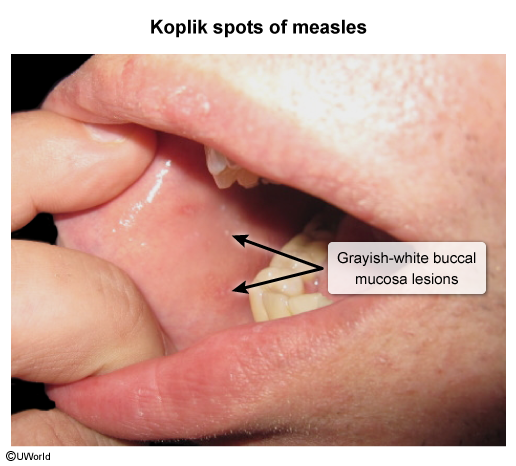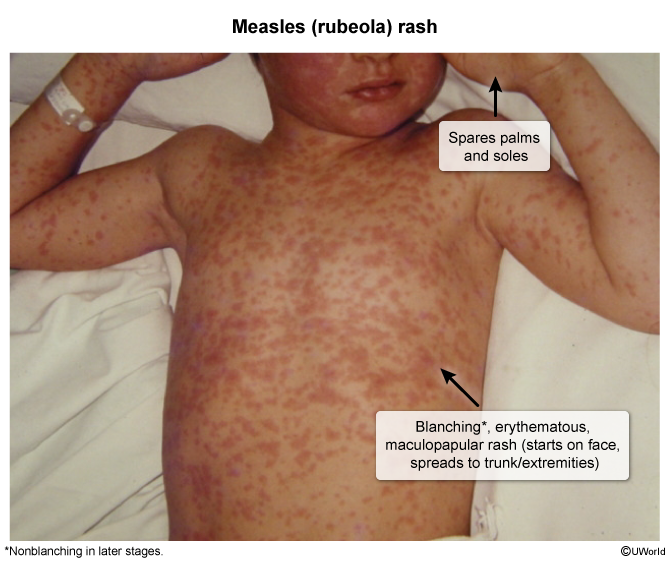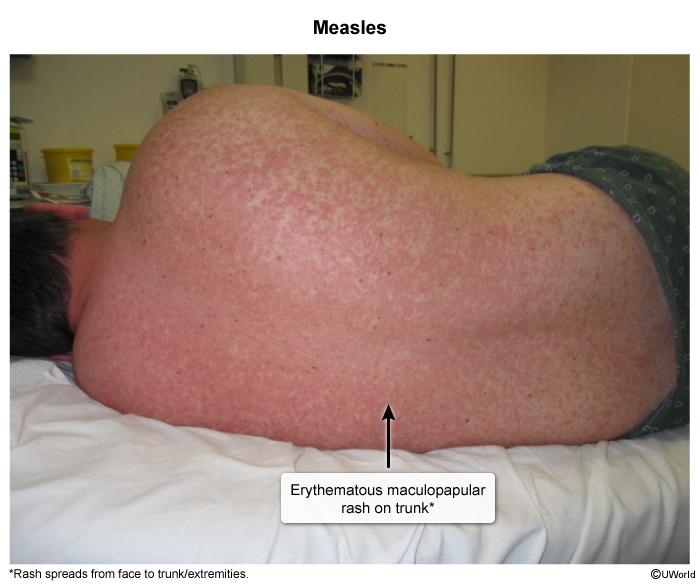Measles
Article Sections
Introduction
Measles (also known as rubeola) is a highly contagious infection caused by the measles virus and is characterized by fever, cough, coryza, conjunctivitis, and a maculopapular rash. The disease occurs globally and can lead to complications in up to 30% of patients.
Pathophysiology
The measles virus is an enveloped, nonsegmented, negative-sense RNA virus of the Paramyxoviridae family.
Measles is spread by very small infectious respiratory particles (<5 µm), in contrast to the larger respiratory particles (≥5 µm) associated with other infections (eg, group A Streptococcus). Due to their miniscule particle size, measles can remain suspended in the air for up to 2 hours. As a result, patients can contract measles by entering a room long after an infected person has already exited (eg, waiting room, day care center).
Continue Learning with UWorld
Get the full Measles article plus rich visuals, real-world cases, and in-depth insights from medical experts, all available through the UWorld Medical Library.
Figures
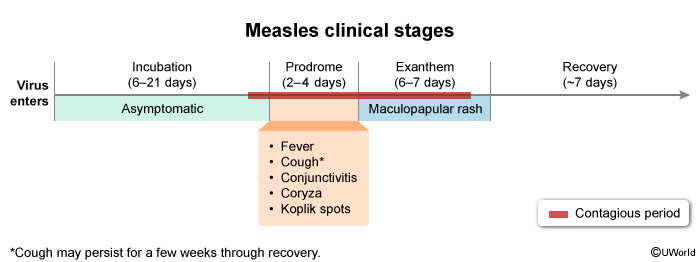
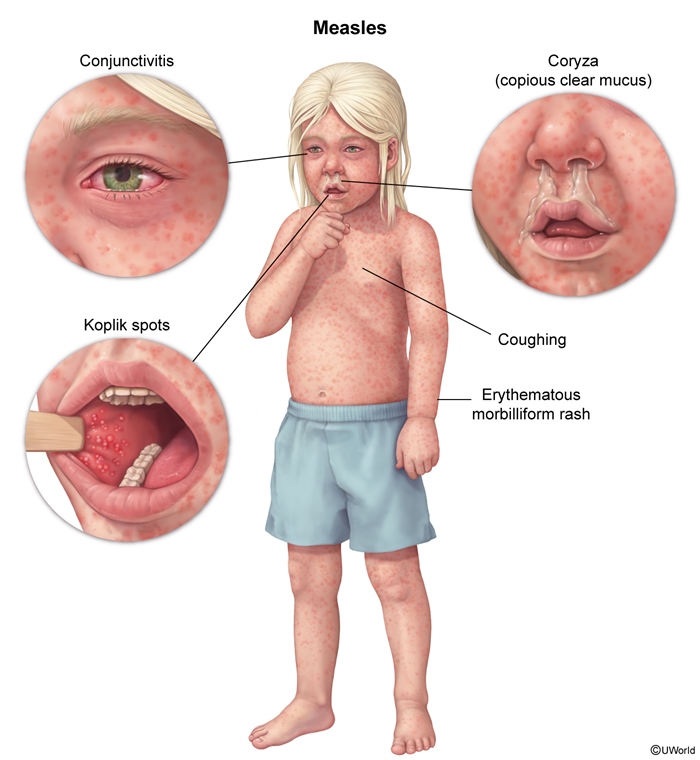
Images
